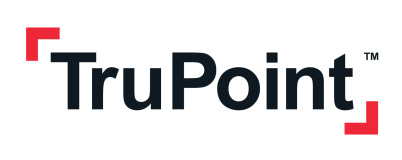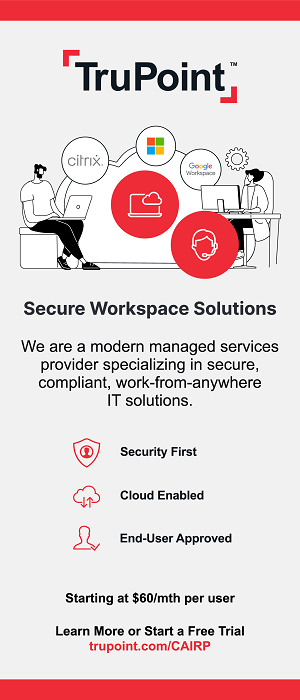Rebuilding Success Magazine Features - Fall/Winter 2025 > Reducing Downtime Risks: Building a Resilient IT Foundation for Financial Services
Reducing Downtime Risks: Building a Resilient IT Foundation for Financial Services
 |
By Michael Turcsanyi, CEO, TruPoint
Sponsored Content

As the pace of technological change accelerates, so too does the need for financial services firms—particularly those in the insolvency and trustee space—to modernize their IT infrastructure. Traditional client-server applications, outdated folder-based file systems, and fragmented authentication models are giving way to a new generation of interconnected, cloud-based platforms. These systems are designed not just to support work, but to empower it—unlocking new levels of efficiency, security, and, most critically, resilience.
With increased regulatory scrutiny and client expectations for always-on availability, the cost of IT downtime is higher than ever. Trustees and insolvency professionals must navigate complex workloads involving sensitive financial data, court-mandated timelines, and high-volume communications. In this environment, even brief outages can lead to significant operational, reputational, and financial risk.
This article explores how forward-thinking firms are adopting platforms like Microsoft 365, Entra, and Zero Trust frameworks, alongside backup and compliance technologies, to reduce downtime risks and build a more resilient IT foundation.
Why Downtime Is So Costly for Financial Services
In the financial services sector, downtime impacts more than productivity—it erodes client trust and may lead to compliance violations. For trustee firms:
-
Delays in court or regulatory filings can jeopardize cases.
-
Missed communications with creditors or clients may escalate into reputational damage.
-
Lost or inaccessible data can trigger legal and regulatory complications.
When critical systems go down, firms often face cascading effects—from delayed disbursements and casework to overwhelmed support staff and costly recovery processes.
Building Blocks of a Resilient IT Infrastructure
1. Cloud Storage & Collaboration with Microsoft SharePoint
Cloud storage platforms like Microsoft SharePoint provide secure, centralized access to key documents and case files. SharePoint’s integration within Microsoft 365 enhances collaboration, ensures version control, and supports remote access—all while offering granular permissioning and data loss prevention features. Unlike legacy file systems, SharePoint is designed for continuity and uptime.
2. Zero Trust Security with Microsoft Entra
Traditional perimeter-based security models are no longer sufficient. Microsoft Entra helps organizations implement a Zero Trust approach, where identity, device health, and user context are continuously verified. This not only secures access but ensures that disruptions—such as device loss or account compromise—do not propagate into wider system failures.
3. Reliable Communications with Microsoft Teams Phone
Modern cloud phone systems like Microsoft Teams Phone eliminate reliance on outdated PBX systems. With Teams, firms gain integrated calling, video conferencing, voicemail transcription, and mobile access—ensuring communication continuity regardless of location or device.
4. Robust Data Backup with Veeam
While Microsoft provides built-in redundancy, it’s still essential to maintain a comprehensive backup solution. Tools like Veeam offer advanced backup and recovery for Microsoft 365, including email, Teams data, SharePoint libraries, and OneDrive files. In the event of accidental deletion, ransomware, or service outages, firms can restore critical data with minimal disruption.
5. Governance, Risk & Compliance (GRC) Systems
Maintaining compliance with evolving privacy, financial, and security regulations requires more than good intentions. GRC platforms (like our TruCompliance solution) help trustee firms track, report, and manage risk systematically—ensuring that IT policies, regulatory controls, and data retention rules are consistently enforced.
Real-World Scenario: Preventing and Recovering from Disruptions
For small to mid-sized trustee firms, the threat of ransomware or phishing attacks is not just hypothetical—it’s a growing risk. These firms handle sensitive client data, regulatory filings, and time-sensitive communications, making them prime targets for cybercriminals. In the past, a single successful attack could cripple operations for days, halt access to vital records, and severely damage a firm’s reputation.
However, with today’s modern IT tools and practices, many of these catastrophic scenarios can be prevented altogether. Technologies like cloud-based storage, integrated multi-factor authentication, Zero Trust, and intelligent access controls work together to minimize vulnerabilities. When configured properly, these systems can detect threats early, contain their spread, and allow users to continue working securely—even during an incident.
Takeaway: Resilience Is the New Baseline
For trustee firms, IT resilience is no longer a luxury—it is a strategic necessity. Modern cloud platforms and security-first design help minimize risk, maintain compliance, and support continuous operations in the face of cyber threats, human error, or natural disasters.
How TruPoint Supports Digital Transformation in the Trustee Sector
While this article is not a sales pitch, it is worth noting that TruPoint has deep expertise in helping financial services organizations modernize their IT environments. We partner with clients across Canada to implement secure Microsoft 365 environments, integrate backup and GRC solutions, and guide firms through Zero Trust transitions. Our team understands the sensitivity, regulatory obligations, and operational demands unique to the trustee profession—and we are here to support their digital transformation journey.
